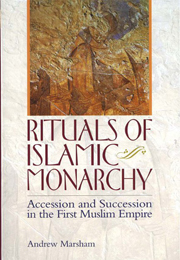Book contents
- Frontmatter
- Contents
- List of maps and figures
- Acknowledgements
- Map 1
- Map 2
- Map 3
- INTRODUCTION
- PART I LATE ANTIQUE ARABIA AND EARLY ISLAM (c. 550–c. 660)
- PART II THE UMAYYAD CALIPHATE (c. 660–750)
- PART III THE EARLY ABBASID CALIPHATE (c. 750–809)
- INTRODUCTION
- 10 THE CONSOLIDATION OF ABBASID POWER: AL-MANṢŪR AND AL-MAHDĪ (754–785)
- 11 THE CALIPHATES OF MŪSĀ AL-HĀDĪ (785–786) AND HĀRŪN AL-RASHĪD (786–809)
- 12 ‘DISPOSITIVE DOCUMENTS’ FOR THE EARLY ABBASID SUCCESSION
- PART IV THE MIDDLE ABBASID CALIPHATE (809–865)
- CONCLUSION
- Genealogical table of Quraysh
- Genealogical table of the Abbasid caliphs
- Bibliography
- Index
11 - THE CALIPHATES OF MŪSĀ AL-HĀDĪ (785–786) AND HĀRŪN AL-RASHĪD (786–809)
from PART III - THE EARLY ABBASID CALIPHATE (c. 750–809)
Published online by Cambridge University Press: 05 September 2013
- Frontmatter
- Contents
- List of maps and figures
- Acknowledgements
- Map 1
- Map 2
- Map 3
- INTRODUCTION
- PART I LATE ANTIQUE ARABIA AND EARLY ISLAM (c. 550–c. 660)
- PART II THE UMAYYAD CALIPHATE (c. 660–750)
- PART III THE EARLY ABBASID CALIPHATE (c. 750–809)
- INTRODUCTION
- 10 THE CONSOLIDATION OF ABBASID POWER: AL-MANṢŪR AND AL-MAHDĪ (754–785)
- 11 THE CALIPHATES OF MŪSĀ AL-HĀDĪ (785–786) AND HĀRŪN AL-RASHĪD (786–809)
- 12 ‘DISPOSITIVE DOCUMENTS’ FOR THE EARLY ABBASID SUCCESSION
- PART IV THE MIDDLE ABBASID CALIPHATE (809–865)
- CONCLUSION
- Genealogical table of Quraysh
- Genealogical table of the Abbasid caliphs
- Bibliography
- Index
Summary
When al-Mahdī died suddenly, and unexpectedly, on a hunting expedition on 4 August 785, Hārūn al-Rashīd was with the caliph at Māsabadhān (the foothills of al-Jibāl, some 250 kilometres east of Baghdad). Al-Hadī, the senior successor, was campaigning in Jurjān, east of the Caspian Sea (a further 750 kilometres north-east of the capital). Hārūn al-Rashīd duly had Mūsā recognised as caliph, but Mūsā was to reign for less than fourteen months; he died in September 786. As a result, accounts of the events of his very brief caliphate (and of the succession arrangements under al-Mahdī) were shaped during the caliphate of Hārūn al-Rashīd, who reigned for the next twenty-three years. What may have amounted to a coup, orchestrated by Hārūn's supporters at the imperial court and in the provincial armies, appears to have been partially suppressed in the extant accounts.
According to al-Ṭabarī, the mawlā, al-Rabīc b. Yūnus, took the opportunity of proclaiming al-Hādī's accession from Māsabadhān also to proclaim Hārūn al-Rashīd as the walī al- cahd. The letters to the provinces requested the pledge of allegiance to al-Hādī as caliph and Hārūn al-Rashīd as walī al- cahd. As we have seen, this may have been the first occasion on which Hārūn was formally proclaimed as such; if so, it amounted to an arrogation of the rights of al-Hādī to decide the succession, and thus set the scene for what appears to have amounted to near civil war.
- Type
- Chapter
- Information
- Rituals of Islamic MonarchyAccession and Succession in the First Muslim Empire, pp. 216 - 229Publisher: Edinburgh University PressPrint publication year: 2009

